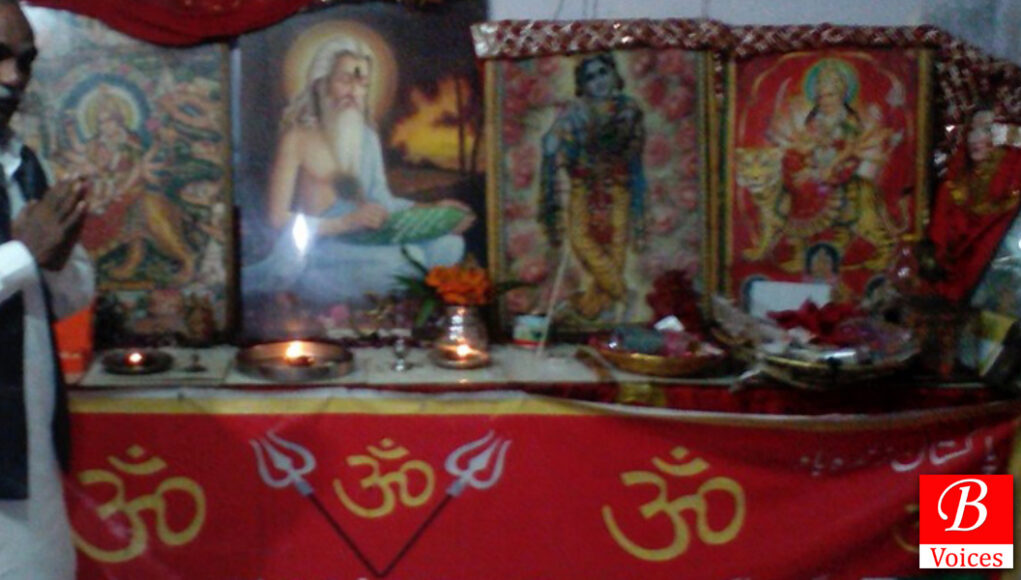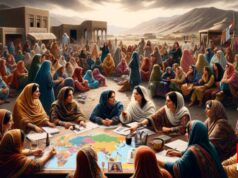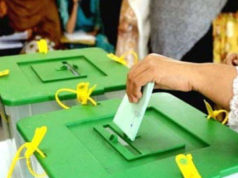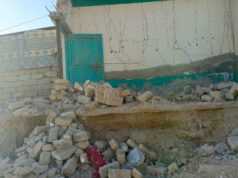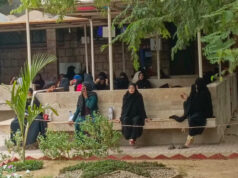Muhammad Faqeer
LAHORE: The Partition of the Sub-Continent caused one of the greatest migrations in human history, triggering untold stories of miseries and harrowing tales of communal riots in both present-day Pakistan and India.
Lahore, which was home to countless Hindus, witnessed their migration in droves from Lahore to various Indian cities due to communal riots. They abandoned their properties and places of worship which were later used as schools, and madrasas in Lahore and elsewhere in Punjab, Pakistan.
As for Lahore, there were few prominent temples which included Jain Mandir, Sitla Mandir, and Bhadra Kali Mandir. These were a few historical temples, besides other temples across the country, which came under attack and were burnt down by mobs in the wake of Babri mosque incident that took place in India. Ironically, students and residents who lived around and inside the temples also helped mobs to burn down the temples in the grip of religious hatred.
Read Also: A Mountain to Climb Everyday
The Babri Mosque incident occurred on November 6, 1992 in Indian state, Ayodhya. The Hindu version holds that the mosque was built by first Mughal ruler Babar at the site of a Hindu temple which is why they demolished it to rebuild the temple. The incident triggered riots and mob attacks against Hindu religious property in Pakistan.
“My grandfather was a member of the Indian National Congress (INC), but he soon quit the party after developing differences with its ranks. Subsequently, he joined the Pakistan Muslim League,” said Bhagat Lal Khokar, who is a priest at the only functional temple in the Lahore city called Nila Gumbad Mandir besides Krishna Temple. He said , “From 1947 to 1950, our relatives, who had left for India, kept urging us to shift to India. But we flatly refused, saying that Pakistan is our motherland. How can one leave his motherland who has attachment to it?”
Nila Gumbad Mandir, a Valmiki Temple, is located in Bheem street of New Anarkali, Lahore, while previously the name of the street was Valmiki street which was later changed. At the gate of the temple, an orange temple flag was hoisted. Inside the temple, a group of Valmikis, who are also known as Balmkis, were sitting together. “This temple is a house for poor and poverty stricken people like us, as well as a place of assembly,” they told this scribe. “Not only Valmikis but also the people belonging to the other religions and sects also visit the temple,” they added.
“It is a historical temple, which is 12, 000 years old,” Bhagat Lal Khokar said and added, “This temple is named after Valmiki, who is author of holy scriptures called the Ramayana and the Yoga Vasistha. Also, it is called the Nila Gumbad Mandir, and around 17 Valmiki families live in the street nearby the temple.”
He further added, “Here, at the temple, the people come and gather who belong to different religions and faiths, including Muslims, Christians, and Sikhs, etc. For example, when they come to shop in Anarkali bazaar, they also pay visit to us. During our religious festivities, all people gather and celebrate with us together.”
Inside the gate of the temple, a small group of the community also dwells beside the Valmiki temple. “At the time of partition, the temple was not even touched,” Bhagat Lal said, “Unfortunately, due to demolition of Babri Mosque, we knew that we would bear the brunt over here. As a result, when we were sitting inside the temple following the Babri Mosque incident, a violent mob entered the temple. But thankfully they did not hurt us but they set on fire the old Valmiki temple which was previously present in its fine shape.”
According to Valmiki community members, a mob carrying weapons entered into the temple, smashing the idols. They also broke utensils and earthenware inside the kitchen; they also took away the gold from inside the temple. Bhagat Lal said, “When it was set on fire, our stuff, and other valuable things were also burnt. We did not ask the government for all those things which were burnt down. Somehow, they built a temple at the same site, which now consists of two rooms.”
Following the incident, Bhagat Lal and other members of the community had to go into hiding and live with their relatives. On the other hand, it was rumored that they had left for India. “Yes, we had gone into hiding, but we came back when the situation normalized. We did not leave Pakistan, as it is our mother land; we are sons of the soil. Nor did we go to India. How can someone leave his mother land?” asked Bhagat Lal. “We are born in Pakistan; we will die here in Pakistan,” he added.
“It is an old temple in Lahore,” says Abdul Wahab, an MPhil scholar in the discipline of History in Lahore. “But it is not as old as local Hindus claim,” Wahab said who has a research to his credit as a part of his MPhil thesis.
Sharing his findings, he said that it was a pre-partition era temple in Lahore, adding that as it was one of the few Hindu temples, most of the Hindus consider it ancient, and they go for worship there.
In reply to a question, he said that local Christians and their children too go to this temple, and they are ones who converted to Christianity during the British rule in the subcontinent, adding that they belonged to lower Hindu caste Hindus earlier.
Due to persecution and lack of economic opportunities a great number of Valimkis have converted to Christianity. As a result, it is said that their number has dwindled. But Valmiki community members do not concur; for example, they say that despite Valmiki community members’ conversion to Christianity, their number is still considerable. .
Patras Masih, who is a Christian, was also present at the temple. While talking to this scribe, he said, “My parents were Valmikis, and I converted to Christianity. Despite it, I come regularly to this Valmiki temple, because my parents used to come, too.” Besides me, he said, there are many Christian converts like me who come here, and assemble with Valimikis.”
As far as the government is concerned, the Valmiki community members say except the construction of a two room temple, the government has not financially supported them. “It is kindness of the government that it is tolerating us,” one of them tells this scribe on a lighter note. On the other hand, Valmiki community members say that they presently live peacefully and harmoniously with other community members. But, due to India-Pakistan clashes, they say, they have to pass sleepless nights in fear of bearing the consequences.
“We have been visiting the temple regularly,” says Prakash, a member of Valmiki community in Lahore. “We are a tiny community. So, especially during religious festivities, we come together to the temple to pray not only for our own community but for the peace and prosperity of Pakistan. While coming together, we feel attachment with each other more than in anytime in Lahore,” he adds.
Prakash nostalgically remembers the good old pre-Babri Mosque incident days. “Before that, there was more harmony than today,” he tells Balochistan Voices. “Following the incident, we have felt that we have been separated from our Muslims brothers. However, as of now, he says, things are improving. “For instance, there are Muslims brothers who come to us and congratulate us on our festivities. As well, they stand with us in solidarity when there is need of it,” he adds.
“The said temple is like a big extended family to us where we stand together as one like a family stands with its members,” he concludes.
Share your comments!


